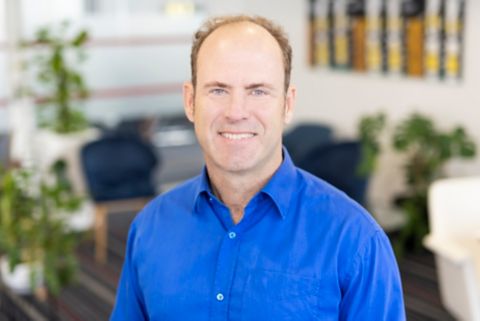Jeremy Donovan, a Kuku-Yalanji (Western Yalanji) and Gumbaynngirr man from the First Nations of far North Queensland, is a respected Indigenous leader as well as an artist and musician. Jeremy’s extensive knowledge of his cultural heritage has translated into a career as a storyteller, travelling all over Australia and internationally giving keynote speeches on Indigenous culture and the disparity he has encountered.
Sessions were held during NAIDOC Week (7-14 July) from 28 June to 4 July with RMIT Training employees and students, and other areas within RMIT University who reside in RMIT Building 108, including RMIT Online, Global Marketing and Student Recruitment, the Urban School and Enterprise Project & Business Performance. The Making meaning out of NAIDOC week sessions celebrated Australia’s Indigenous heritage and provided an opportunity to educate employees on its significance.
Jeremy recounted the story of his upbringing and subsequent immersion in the Aboriginal culture by his beloved mentor, his grandfather. “My grandfather told me I need to dream to be somebody. His voice echoes with me everywhere. He saved my life.”
Sharing his inclusive approach to reconciliation, Jeremy offered a new perspective on the issue. “It’s not just my history, it’s yours, it belongs to you and all of us as Australians. Education is the key – it allows us to become closer, we need to be brave enough to talk to each other, to make mistakes, to ask questions.”
RMIT Training’s educators attended an exclusive session in line with plans to incorporate Indigenous studies into the curriculum. Louise Austin, Acting Deputy Director for RMIT English Worldwide, commented how inspiring the session was, “it was a really valuable learning experience because we got to hear his story in a way that was true and honest.”
Students were treated to art classes where they learned the painting technique pointillism, which is the most common technique used in Aboriginal art. While the students painted, Jeremy explained how Indigenous people express their relationship with the land through art and the dots symbolise how rain drops look once they’ve fallen onto sand.
Special guest Lois Peeler AM, 2017 Victorian Senior Australian of the Year and former member of the Sapphires, joined Jeremy in hosting an afternoon tea with employees in a relaxed setting, which was a highlight of the week.
Lois shared her experiences with education as a young Aboriginal girl and how this led her to establish the Worawa Aboriginal School, which has a Memorandum of Understanding with RMIT.
Jeremy moved the audience with a didgeridoo performance and spoke about his previous experiences working with Catherine O’Sullivan, RMIT Training CEO. “Catherine has always given us (Indigenous people) a seat at the table,” Jeremy said.


